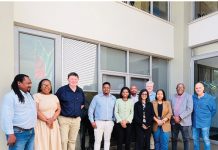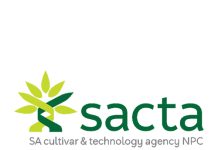Load shedding in South Africa has become a serious constraint on growth and profitability for various sectors, including agriculture.
In addressing the negative impact on the productivity and profitability of farm operations brought about by the load shedding crisis, the South African Department of Agriculture, Land Reform and Rural Development (DALRRD) has partnered with the Land Bank to introduce the Agro Energy Fund (AEF). This blended finance programme aims to alleviate the impact of load shedding on farming operations and the agricultural sector by providing funding support for alternative energy assets.
Early in 2023 and in response to the energy challenges in the sector, the then Minister of Agriculture, Land Reform and Rural Development, Thoko Didiza, established a task team comprising Agri SA, Agbiz, the Bureau for Food and Agricultural Policy (BFAP), and DALRRD officials. The team advised on solutions to mitigate against the impact of energy cuts on the sector. In August 2023 she announced the establishment of the AEF. The fund aims to move producers away from reliance on the Eskom grid and encourage investment in sustainable energy solutions to supplement conventional electricity usage. Solar energy, biogas, and biomass plants are among the viable options for producers seeking grants and loans.
Who will benefit?
Through the AEF, small, medium, large-scale and mega commercial producers will be able to purchase equipment and infrastructure to aid energy-intensive activities including cold-chain production and irrigation.
Large-scale and mega commercial producers are eligible for a grant of up to 30% of the total financed amount, with the grant portion capped at R1,5 million per applicant. Medium-scale producers are eligible for a grant of up to 50% of the total financed amount, with the grant portion capped at R1 million per applicant, while smallholder producers are eligible for a grant of up to 70% of the total financed amount, with the grant portion capped at R500 000 per applicant.
 Sector focus
Sector focus
Targeted commodities under the AEF that have high energy consumption at farm level are:
- Dairy farming;
- poultry and piggeries;
- all irrigated commodities; and
- on-farm processing.
Please not the above commodity list is not exhaustive, and will be guided by internal assessment at Land Bank.
Qualifying criteria
- The applicant must be a South African citizen with a valid ID (must be 18 years and above) and/or registered business entity.
- The applicant must be applying to implement an energy efficiency project or to implement a project that partially offsets electricity from the grid through self-use renewable energy.
- The applicant must be operating an agricultural business at the primary or secondary level.
- Applicants must demonstrate the capacity to utilise the energy requirements applied for.
- Proof of land ownership or proof of access to land (lease tenure must be aligned to the term of the loan at the minimum) must be provided.
- Only one application per entity or applicant will be considered.
- No debt takeovers, debt settlements or refinancing.
Key application requirements
- Applicants must present a business plan, demonstrating the impact of the funding support on the operations of the business and five-year cash flow projections.
- Historical financial statements for operating entities must be made available.
- Applicants must provide a feasibility or energy expert report, outlining the energy requirement and significant energy uses of the farm including the infrastructure design.
- For existing operating entities, proof of historical energy consumption (twelve months municipality bill or equivalent) must be submitted and for new entrants as per the feasibility or energy expert report.
- Environmental authorisations (EIA/EA) must be shown to be in place where applicable in terms of the regulations.
- A generation license from NERSA where applicable in terms of the regulations.
- Health and safety requirements to be complied with.
- Quotations for Capex requirements: to specify the aftercare service, warranties and lifespan.
- A project implementation plan has to be provided.
- Certification of the service provider of choice as a qualified entity or individual for installation and registered with relevant competent authorities or industry bodies.
Exclusions
- Foreign nationals and illegal mmigrants.
- Employees of government and state-owned entities (24 months cooling period).
- Politicians in public office (12 months cooling period).
- Politically exposed persons posing a reputational risk as identified through the credit provider’s lending policies, including but not limited to anti-money laundering risk management and compliance policies.
- Part-time producers (regardless of a farm manager being in place or to be employed).
- Distressed producers.
- Non-agricultural businesses.
- Double dipping applications (if already benefiting from other government energy programmes).
- Off-farm processors (industrialists).
At least 500 producers are expected to benefit from the AEF, valued at R1,2 billion. It represents a significant step toward enhancing energy resilience in South Africa’s agricultural sector. By empowering producers with alternative energy solutions, it contributes to sustainable farming practices and economic growth.
You may qualify for a grant under the AEF, provided you are able to obtain a Land Bank loan based on the bank’s lending norms and criteria and meet the AEF criteria.
Visit your local branch or log an enquiry via the Land Bank website at https://landbank.co.za/Pages/Contact-Us.aspx

















